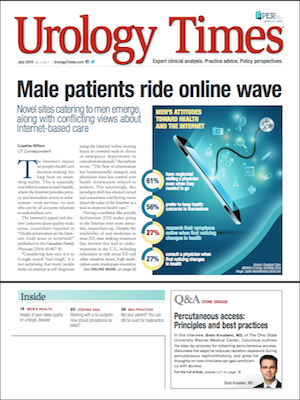Publication
Article
Urology Times Journal
Avoid these six mistakes that can hinder your financial goals
Author(s):
Procrastination and lack of an investment strategy can jeopardize long-term success.
What are some common mistakes physicians make when it comes to financial planning?
Not every physician is financially successful. It takes planning and execution to achieve your financial goals. However, success is not always dictated by what you do right as much as by what you may do wrong. Time and time again, we see physicians make avoidable mistakes that hinder or delay their ability to reach their financial goals.
These common mistakes include:
Procrastination. The number one reason we see physicians fail financially is procrastination. Whether from educational programs, self-research, or working with a financial professional, physicians know what they need to do to become financially successful. However, too often we hear physicians say, “Life gets in the way.” Work, family, and hobbies prevent physicians from devoting the time necessary to get their financial lives in order. The longer the wait, the more difficult it is to get on track.
Lack of clearly defined goals. Vague goals often result in vague plans, and when you have a vague plan, it is easy to deviate from that plan and get off track. It is important to be specific about your goals so you can design a detailed plan for reaching them. For example, when thinking of your retirement goal, at what age do you what to retire? What level of income do you want in retirement? What sources are your savings coming from? What rate of return will you need to earn on your investments? Be specific so you can design a plan for reaching your goals.
Also by Jeff Witz, CFP: How to assemble your financial professional network
Not saving and investing early. Compounding interest is a powerful tool for growing wealth, and the key is saving and investing early so the investment has more opportunity to compound. The cost of waiting is substantial. If you wanted to save $1,000,000 by age 66 (assuming an 8% rate of return), you would have to save $671 per month if you started at age 35, $1,698 per month at age 45, and $5,466 per month at age 55. Many physicians wait too long and don’t have the resources to save large amounts due to other financial obligations.
No investment strategy. An investment strategy holds a physician accountable to what types of investments they will purchase, when they will get in and out of the market, and what their asset allocation will be. The investment strategy protects physicians from themselves so they don’t react emotionally when markets are performing very well or performing poorly. It keeps them steady, so they are not tempted to do something not in their own best interest.
Next:Failing to prepare for the unexpectedFailing to prepare for the unexpected. Simply put, many physicians don’t have enough disability and life insurance. Without adequate coverage, your financial goals and the goals of your family are at risk in the event of a long-term disability or your premature death. Protect yourself so you and your family can still reach financial goals even if you are unable to work or if you die early.
Lifestyle creep. Frequently, we see physicians start splashing the cash right out of their residency or fellowship. They buy a big home or new car, eat at fancy restaurants, and generally start living an extravagant lifestyle. This often comes at the expense of saving for financial goals later in life. The realization that their focus needs to change comes too late, and there isn’t enough time or money available to catch up. Be careful about how you spend your money, especially early in your career.
Read: The pros and cons of buying vs. renting your home
All of the above mistakes are avoidable. If you want to be financially successful, avoiding these mistakes while executing your financial plan is critically important.
Do I need an umbrella insurance policy? If so, how much should I get?
An umbrella insurance policy covers the same things as your home and auto policies, plus some additional items, including lawsuits. Umbrella coverage picks up where the liability limits of your homeowner and auto policies leave off. Most insurers cap the home and auto liability coverage they will sell you at $500,000 or $1 million. If you have assets valued above what your home and auto policy cover, an umbrella policy can cover those assets. Umbrella policies are usually sold in increments of $1 million, so determining an appropriate amount will require that you calculate the value of your assets not covered by your home and auto policy.
The information in this column is designed to be authoritative. The publisher is not engaged in rendering legal, investment, or tax advice.






















